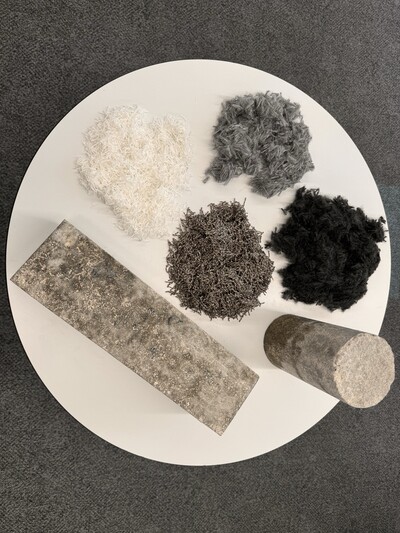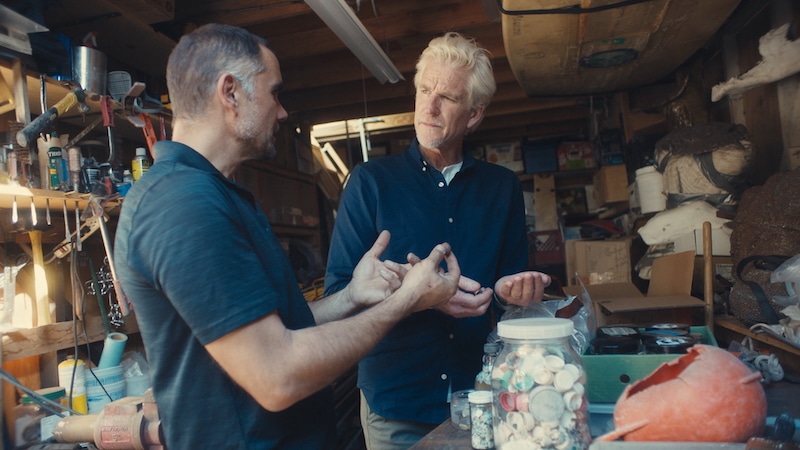


Naviglio Grande, the oldest navigable canal in Europe
This post was originally published on We Build ValueL’articolo Naviglio Grande, the oldest navigable canal in Europe proviene da We Build...
A concrete use for carpet fibres
Australian engineers have come up with an unexpected use for discarded carpets and other textiles: as a means to make concrete stronger and resistant to cracks.
This innovation, led by scientists at RMIT University, addresses a major challenge in the construction sector, where the annual cost of repair for cracks in reinforced concrete structures in Australia is about $8 billion. In the US, the cost is estimated at US$76 billion per year.
The research team is working with partners including Textile Recyclers Australia, Godfrey Hirst Australia and councils in Victoria to conduct field studies of on-ground slabs made of reclaimed textiles.
Lead researcher Dr Chamila Gunasekara, from RMIT, said the team had developed a technique using waste carpet fibres to reduce early-age shrinkage cracking in concrete by up to 30%, while also improving the concrete’s durability.
Using the state-of-the-art textile research facilities at RMIT, the team of civil engineers and textile researchers has also been able to test other discarded textiles, including clothing fabrics, in strengthening concrete.
“Cracking in early-age concrete slabs is a longstanding challenge in construction projects that can cause premature corrosion, not only making a building look bad but also risking its structural integrity and safety,” said Gunasekara, an ARC DECRA fellow from the School of Engineering.
“Scrap carpet fibres can be used to increase concrete’s strength by 40% in tension and prevent early cracking, by reducing shrinkage substantially.”
Laboratory concrete samples have been created using the various textile materials and shown to meet Australian Standards for engineering performance and environmental requirements.
Concrete samples made with carpet fibres. Image credit: RMIT University.
Addressing a big waste challenge
Gunasekara said the disposal of carpets and other textiles poses an enormous environmental challenge.
“Australia is the second largest consumer of textiles per person in the world, after the US. The average Australian purchases 27 kg of new clothing and textiles every year, and discards 23 kg into landfill,” he said.
“Burning carpet waste releases various toxic gases, creating environmental concerns.”
Dr Shadi Houshyar, a textile and material scientist at RMIT, said that discarded firefighting clothes are a particularly challenging waste issue. This is because the same qualities that make these materials ideal for firefighting also make them difficult to recycle.
“Up to 70% of textile waste would be suitable for conversion into usable fibres, presenting an opportunity in the materials supply chain,” said Houshyar, from the School of Engineering.
Bringing fabric-reinforced concrete into the real world
To capture the unexpected conditions encountered in real-world construction projects, the team will conduct field trials with support from industry and local government partners.
These trials, as well as computational modelling, will be funded by the ARC Industrial Transformation Research Hub for Transformation of Reclaimed Waste Resources to Engineered Materials and Solutions for a Circular Economy (TREMS) and an early-career research grant. TREMS is led by Professor Sujeeva Setunge from RMIT.
The team is collaborating with Professor Andrzej Cwirzen from Luleå University of Technology in Sweden on the computational modelling.
Their paper, ‘Enhancement of concrete performance and sustainability through incorporation of diverse waste carpet fibres’, has been published in Construction and Building Materials.
Top image caption: PhD scholar Nayanatara Ruppegoda Gamage and Dr Chamila Gunasekara with concrete samples made using textiles. Image credit: RMIT University.

How Smart Recycling Bins Are Revolutionizing Public Waste Management
Anyone who has ever been to a public recycling center has likely been witness to bins overflowing with many incorrectly sorted items strewn in. In highly populated areas this can become a challenge for public waste management workers to keep up with. Even in less populated areas, staffing shortages can create a backlog. The public […]
The post How Smart Recycling Bins Are Revolutionizing Public Waste Management appeared first on RecycleNation.

World Water Film Festival Opens in New York, Aims to Inspire
Right now across the U.S., drought persists, particularly in the northeast, where wildfires are burning because of the dry conditions. At the same time, some communities are still recovering from the catastrophic effects of hurricane season and the wind and water mash-up they wrought. In either case, water – both as a source of life […]
The post World Water Film Festival Opens in New York, Aims to Inspire appeared first on EcoWatch.
